Each year, nonprofits combine to drill more than 60,000 water wells across Sub-Saharan Africa. At any given time, 40 percent of those wells aren’t working. Those failures are often preventable, due either to a lack of maintenance or poor infrastructure, according to the Rural Water Supply Network. The result is $1.2 billion in wasted investment, not to mention the millions of people left with no access to clean water.
Well Beyond, an Austin-based social good startup has built an app it believes can fix this problem.
In launching the company, founder Sarah Evans joins a growing network of tech entrepreneurs interested in delivering on the idealistic promises of tech — that it can transform lives. But like all startups, social ventures face steep odds in their efforts to take on major challenges.
To succeed in this space, companies need to get a lot of things right. According to a study of 115 social enterprises in Mexico, only 5 percent lasted more than 10 years. Common causes for failure included a lack of resources, government policy challenges and misaligned boards of directors.
For companies like Well Beyond to succeed, they must carefully balance profitability with delivering on their promise to do good. While Evans would be the first to admit her company is still learning, she shared a few tips she’s picked up in the process of launching Well Beyond:
- Identify opportunities for impact where nonprofits are struggling to deliver.
- If you are building tech for users in another country, make sure you understand those users and their contexts. Their culture, values, interests and ideas may be different from your own, which could mean your tech isn’t adopted.
- Identify and align yourself with investors who trust you and your vision.
- Pick your launch partners carefully, as you’ll be working with them closely. Make sure their interests and approaches align with your own.
- Honor the communities you’re trying to help, and make sure you are giving them something they really need.
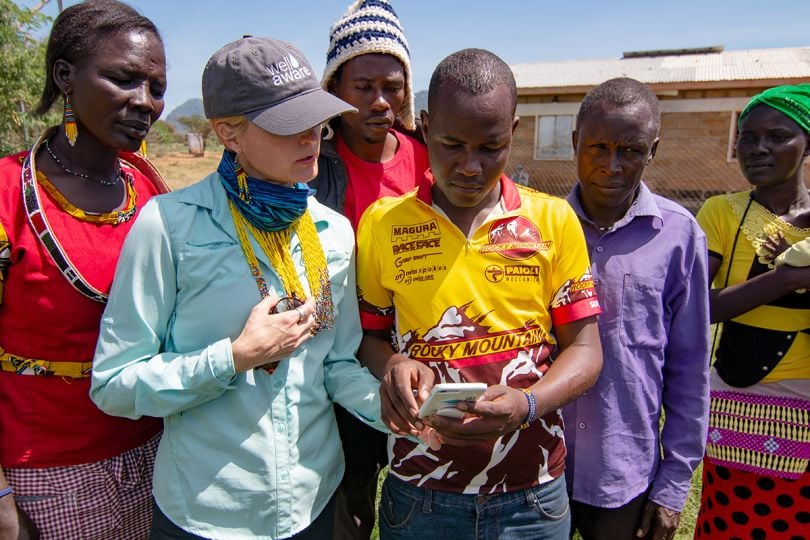
How Well Beyond’s app keeps fresh water flowing
To understand the path Evans has taken to launch a social good startup, let’s first talk about what Well Beyond does.
Launched in 2016, Well Beyond aims to partner with nonprofits and the communities they drill in to expand the lifespans of those wells. To do so, the company is in the process of developing a water well diagnostic app that will be free to use for members in the community.
The app will provide community members with an offline decision tree system similar to a medical diagnostics app. It starts by asking basic questions like: “Is there water coming out of the faucet?,” “Where is the water level?” and “Do you see dampness?”
Their responses will funnel them to possible solutions. If those solutions don’t work, they can go to an internet access point and send pictures of the well to the participating nonprofit to find a solution.
Most water system failures come down to easy fixes, like rejiggering a wire or patching a pipe, that a community member can do if they’re guided properly, Evans said. Nonprofits often lack the time or technical know-how to train people in on how to maintain their new wells. Well Beyond plans to bridge that gap.
“The biggest missing piece of the water sector is the maintenance and operation once an NGO walks away,” Evans said. “We can empower them and reduce the downtime with water systems.”
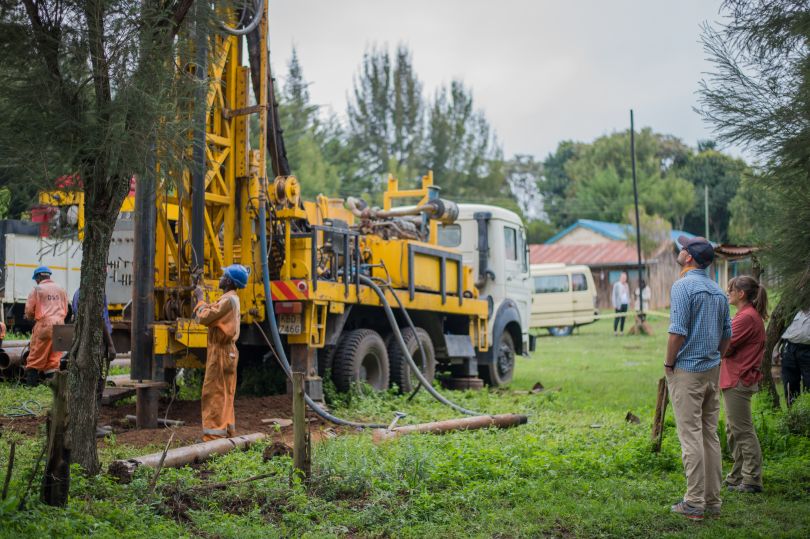
DO FOR-PROFIT COMPANIES HAVE MORE FREEDOM TO DO GOOD?
The concept for Well Beyond sprung out of the work Evans had been doing for her nonprofit, Well Aware, which has built 72 solar-powered water systems in villages across rural Kenya and Tanzania.
Her nonprofit included a team of hydrogeologists and water technicians who worked with a local East African team to ensure its water systems worked and that community members were trained on how to maintain it. Dozens of NGOs had reached out to her team for consultation and help building their wells. Evans knew her team could help, but the ways nonprofit incentives align limited their ability do so.
While there is no law that dictates exactly how a nonprofit must spend its money, the majority of its money is expected to go toward specific water projects. Watchdog websites like Charity Watch rate nonprofits on a scale from A-to-F based on the percentage of its money it spends on projects and overhead. Too much money spent on overhead in a yearly snapshot could look bad to investors wondering why their money isn’t going toward projects that help people.
While sites like Charity Watch are important transparency tools, Evans said, those yearly snapshots they measure don’t leave much room for nonprofits to help other nonprofits out with their projects or invest in future efficiencies — through building an app, for example.
As a for-profit social entrepreneurship company, Well Beyond had more freedom to develop an app, retain water technologists and provide support to other nonprofits, Evans said. So, last year, she stepped down as CEO of Well Aware to lead Well Beyond.
She just needed funding to get started.
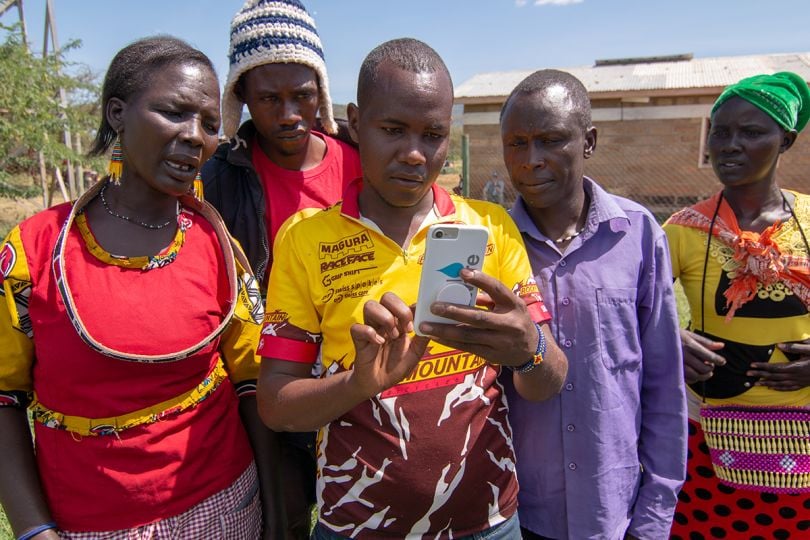
FINDING INVESTORS YOU TRUST IS IMPORTANT
Social entrepreneurship startups have been raising more money in recent years. In 2018, Crunchbase found that the 879 social entrepreneurship companies on its platform have raised a combined $1.6 billion in funding.
Meanwhile, the United Nations and USAID have recognized the impact for-profit, social good companies can have and have started providing grants to support their development. That support can be important for early-stage startups in the sector, since venture capital firms aren’t exactly lining up to pour millions of dollars into social good companies. And when investors do decide to back social good ventures, the money can come with strings attached.
“The whole idea of this social impact investor is nebulous,” Evans said. “It becomes an interesting hybrid of a donor and investor.”
Well Beyond faced two obstacles in obtaining funding: It was building a tool to be used in Africa, and it was innovating in a complicated industry. Everything in Africa is different, Evans said, from the culture to their values to the units they use for measurement. It can be difficult to convince investors to support a product for a place they don’t understand. Meanwhile, the problem Well Beyond aimed to solve contained a mix of cultural and technical challenges.
For those reasons, it was important to Evans that they raised funds from a list of investors she knew and trusted, and who knew and trusted her. If they required voting rights or too much control, they could request features or push the company in a direction that runs counter to their goals, she said.
“The whole idea of this social impact investor is nebulous.”
Evans sought investments from a member of the Well Beyond Board, a previous member of the Well Aware board and family friend, and a founder of Silicon Labs, who brought a tech-focused background and whom she’s known for years.
“It takes a certain kind of investor,” Evans said. “It’s going to be slower return than the typical VC models. We’re also on a bit of an unpredictable timeline since we won’t have our beta and clients until next year.”
To generate revenue, Well Beyond plans to charge NGOs for its services. Those fees will include a one-time onboarding fee, which will involve customizing the app to its specific water systems and training communities on how to use it, and a monthly fee for hosting their system data in the cloud.
In line with its social good mission, Well Beyond conducted a spend-comparison with other management tools NGOs used to make sure their fees were fair. The company anticipates $1.5 million in revenue by 2024, and in a unique financial twist, it plans to re-invest a portion of its revenues into Well Aware. The diagnostics app will be provided free of charge to members of communities who use them to monitor and maintain their water systems.
At the end of her pitches, Evans netted $200,000 in angel investments to lift her product off the ground.
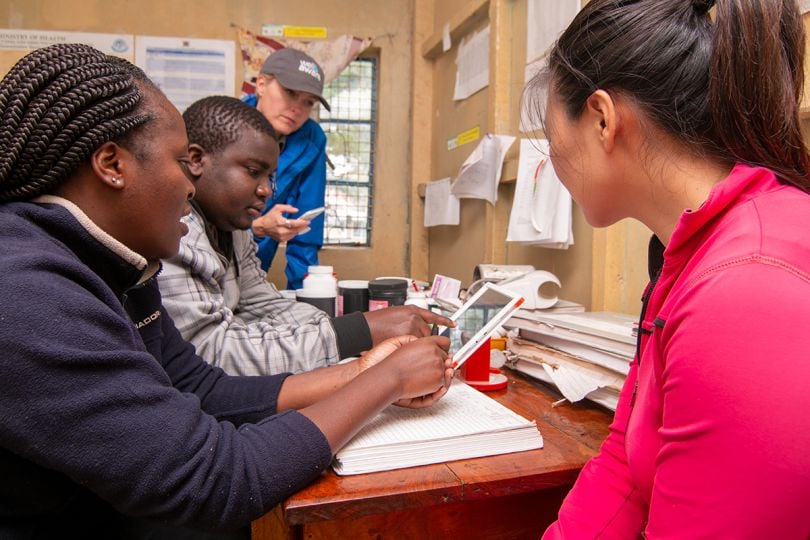
FIND LAUNCH PARTNERS YOU KNOW YOU CAN WORK WITH
While Evans shored up her funding, she also traveled the world to meet with nonprofits and spent countless nights reading peer reviews to find the right launch partners.
For the pilot to work, the partner nonprofits needed to be well-funded, with boots on the ground in East Africa, and possess a similar philosophy about how they go about building their water systems. This will allow her developer and water system expert to create an app customized to the needs of that community’s water pump.
Since each well is different, the app must have solutions relevant to their particular water system. They also want to make sure the community is trained on how to use the app and fix the water system.
“We wanted to make sure that our philosophies on rural water supply were aligned because we're going to be working closely with them adjusting the system to their needs.”
Evans narrowed her search down to three NGOs, two of which agreed to join the pilot program. Both nonprofits are committed to improving their water system success rate, remain invested in the communities they’ve built in and are in need of tech support, she said.
“We wanted to make sure that our philosophies on rural water supply were aligned because we're going to be working closely with them adjusting the system to their needs,” Evans said. “They needed to be responsive, helpful and courteous.”
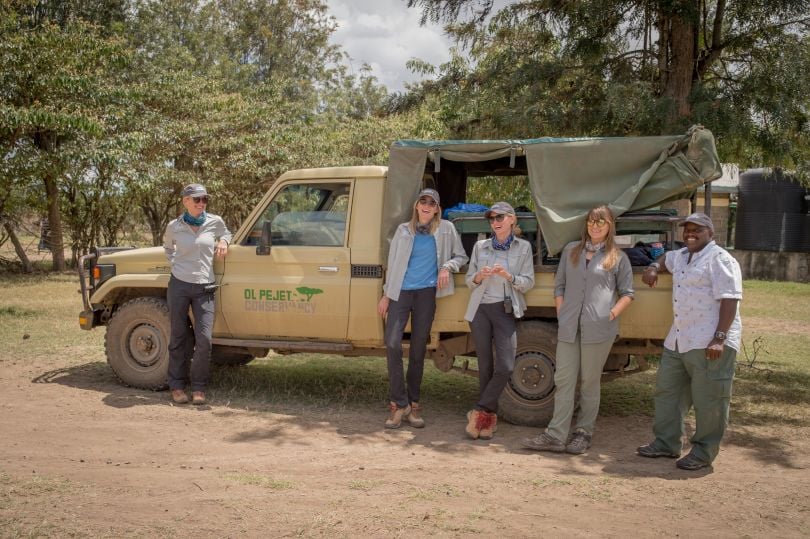
BUILDING THE BETA AND MEASURING SUCCESS
Evans and Bergmann hope to launch the Beta project by May or June 2020. The Beta version of the app will contain the offline flow of diagnostics along with a form submission link. On the administrative side, the app must be able to aggregate activity on how the app is used. Every yes and no a user clicks, will be logged into its system to help track the water system’s issues. It will also send a regularly scheduled water system maintenance checklist to the community and nonprofit.
Success will be measured in the reduction of downtime a water system experiences and overall app usage. Key to its success will be the adoption of its technology. The more communities use the app for maintenance, troubleshooting and diagnostics, the more data they can collect for the nonprofit’s overall project. In turn, that transparency and success can be reported to investors and boost funding.
Well Beyond plans to work with the partner nonprofits to do on-the-ground training, monitoring and engagement with communities to ensure they know how to use the app.
The Beta project will look a lot like the overall vision Evans has for Well Beyond. Once they accrue more performance data, however, the company aims to partner with governments in Africa to deliver water data in return for grants that support high-performing NGOs. This could be another form of revenue down the line, Evans said.
But the data component can also be used as a tool for nonprofits to see where their systems are succeeding and failing so that they can have a longer impact. Ultimately, water pumps are expected to last 20 to 30 years, and Well Beyond hopes to ensure they reach those lifespans.
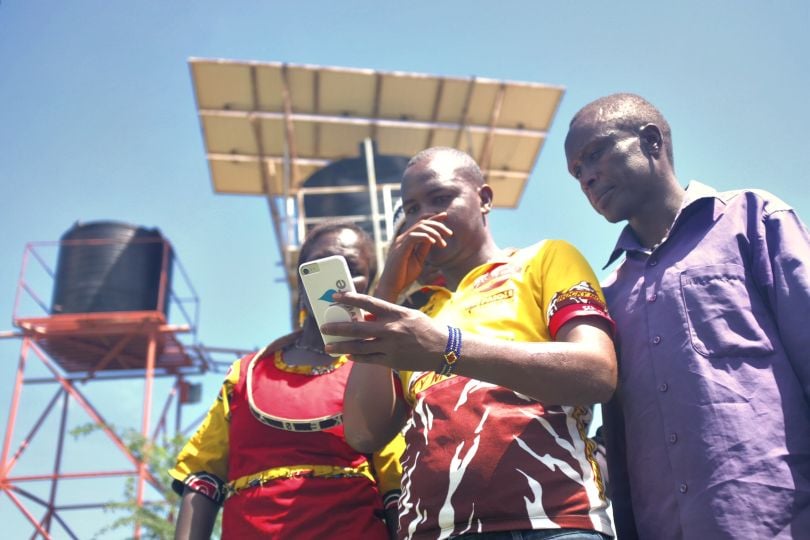
HONOR LOCAL COMMUNITIES AND GIVE THEM WHAT THEY NEED
One of Evans’ favorite projects at Well Aware involved building a water system in a rural, dry part of Kenya for a Turkana tribe about six years ago.
At the time, the community had a shack of a school, and an open hole kids would go into to fetch contaminated water. Evans and her team worked with the community to build a water system equipped with a solar generator. Today, the semi-nomadic community has several classrooms, a clinic on site, dorms for teachers and is in the process of building permanent domiciles.
More importantly, they had a girl graduate from eighth grade for the first time, Evans said.
This is the impact a working water system can have on a community. Evans believes Well Beyond will be in a position to make sure every NGO’s water system maintains operational and can have the same impact.
“We do think this can significantly impact the work not just of our clients, but the sector as a whole, and redeem ourselves as an industry.”
Still, companies like Well Beyond face long odds.
While plenty of unknowns remain, Evans is confident her 10 years of experience building a successful nonprofit and digging wells in East Africa has her prepared to handle any challenges that come her way. If she succeeds, she believes they have a chance to change even more lives in East Africa.
“We do think this can significantly impact the work not just of our clients, but the sector as a whole, and redeem ourselves as an industry,” Evans said. “But at the same time we can honor these communities and deliver on their true needs so they reach their potential.”




